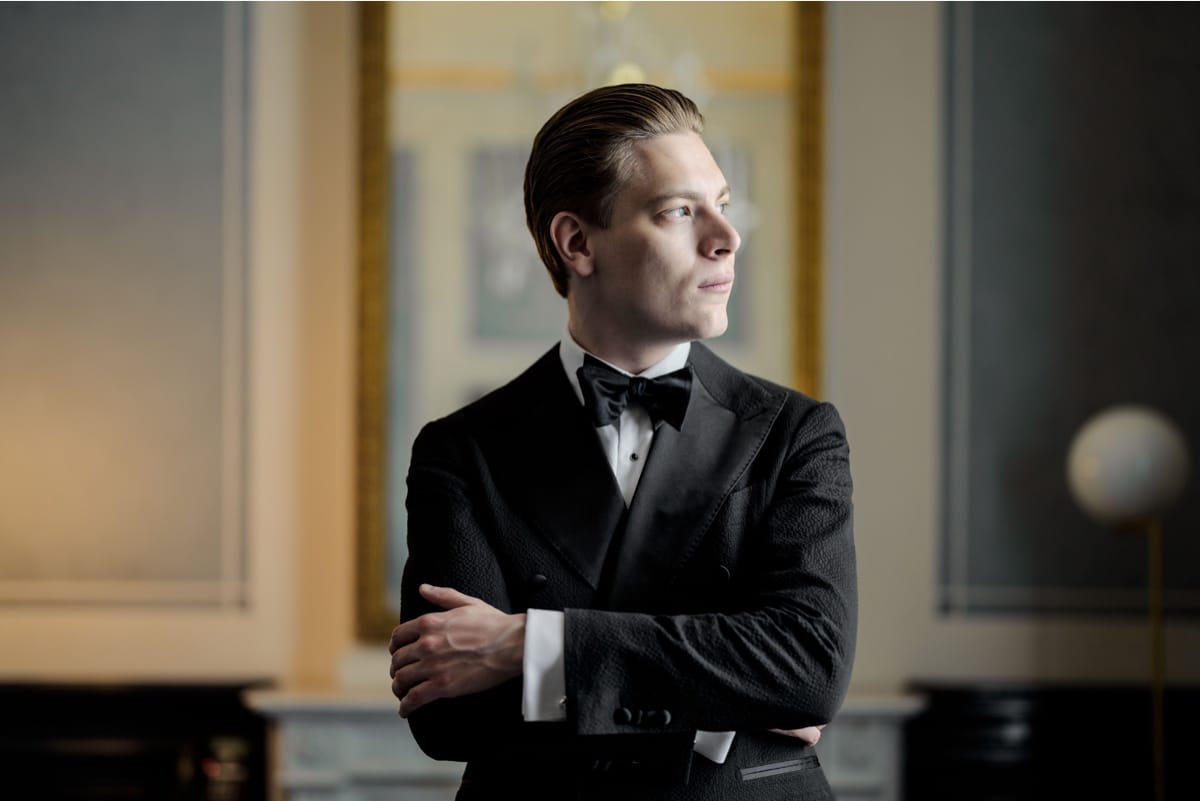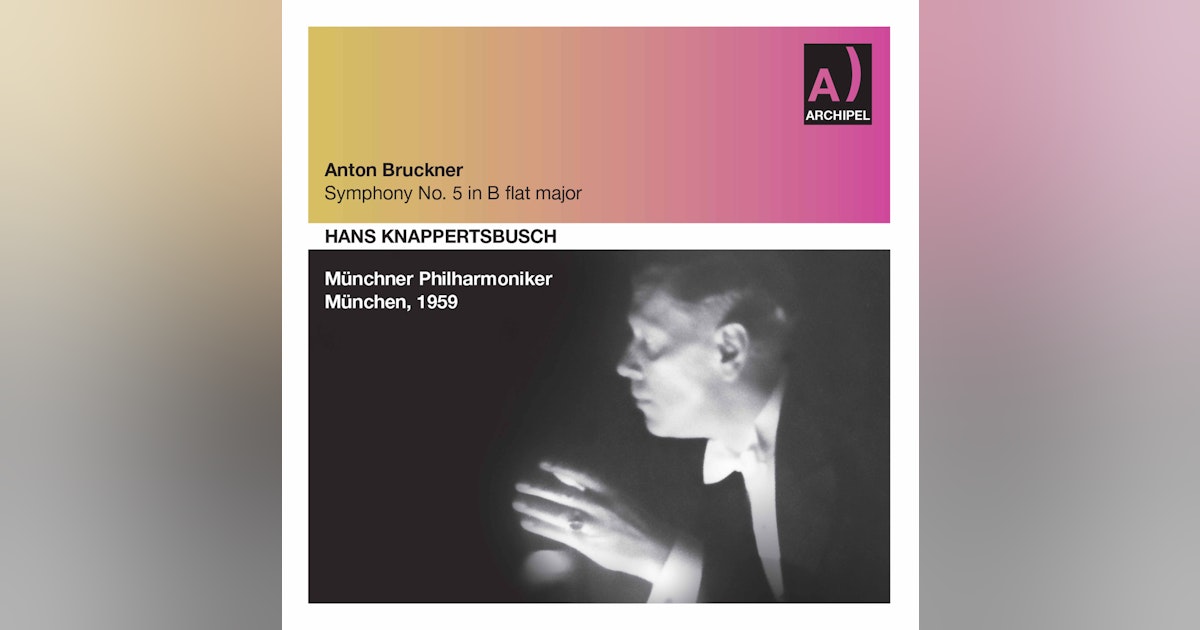
Bruckner Royal Concertgebouw Orchestra / Klaus Mäkelä. Kulturpalast, Dresden, 10.05.2024
Symphony No 5 (1875/76; 1878 version, ed. Leopold Nowak, Third Revised Edition of 2005)
Klaus Mäkelä’s career is in stratospheric mode. He takes over the helm of the Concertgebouw Orchestra in 2027 as the orchestra’s eighth Principal Conductor; he already has his hands full with Orchestre de Paris (Music Director since 2021) and the Oslo Philharmonic (Chief Conductor since 2020), and thee is also his upcoming stewardship of the Chicago Symphony from the 2027/8 season. In the concert brochure for this concert, he is listed as ‘Artistic Partner’ of the Concertgebouw (with Riccardo Chailly listed as Conductor Emeritus and Iván Fischer as Honorary Guest Conductor).
This Bruckner Fifth Symphony, heard here in the “third revised edition” of 2005, was presented as part of a complete cycle celebrating the 200th anniversary of the composer’s birth (September 4, 1824); it was also the official opening concert of the Dresden Festival, following on from the concert performance of Wagner’s Die Walküre conducted by Kent Nagano the night before.
The acoustic of Dresden’s Kulturpalast (Culture Palace) is perfect for Bruckner: it sustains both terrifying, brass-drenched fortissimos as well as allowing clarity in the quietest pianissimos; it also has bloom, a resonance one can hear clearly in those sudden silences Bruckner so enjoys.
No doubting, also, that this is a Rolls Royce among orchestras, too; so far, so expected. But what was surprising was the almost dance-like gait Makela brought to some passages thereafter; if this is a cathedral in sound, maybe the stained-glass windows were designed by an Impressionist.
However, the Achilles Heel of the performance emerged quickly: for all the loving attention to the moment, the bigger picture was hard to discern. The emotional range of the first movement was vast: from disarming charm through to brass walls of sound. The very opening is, here, not a characteristic Bruckner tremolo, but pizzicato low strings, above which the upper strings blossom out in the most beautiful directions. A sense of organic flowering, therefore, and that was certainly on display here; it all boded incredibly well. The brass section was perfectly balanced (good to see Katy Wooley, ex-Phlharmonia, as Principal Horn, and in fine fettle). Strings, violins in particular, were incredibly together, but what was fascinating was that here was Bruckner imbued with the spirit of the dance. Textures were light, rhythms finely sprung. But – and it is a major ‘but’ – it soon became obvious the longer-range vision was lacking; the result was an emphasis on gesture. Mäkelä was, surely, linking ino Bruckner’s own description of the symphony as ‘phantasisch’; but it surely the interaction between that element and the overall structure that is so fascinating, amd it is this that was lacking here.
The slow movement was the first to be composed. An Adagio (reinforced by the indication ‘Sehr langsam’) it again begins with pizzicato strings, this time underpinning an angular yet lyrical oboe melody. That melody was a miracle here, the solo oboe the epitome of control, the legato perfect. Mäkelä’s tempo was swift, more of a Schubertian Andante slow movement than an Adagio; but the whole was suffused with beauty, and as a performance here worked better than the first, contrasts carefully calibrated. The woodwind choir, too, acted as the perfect unit. Good to have no gap before the Scherzo, placed third in Bruckner’s schema. Mäkelä was certainly mobile on the podium here, with lots of dance-like movements that did not seem reflected in the actual music we heard. Horns and woodwind excelled, beyond doubt, and the sudden tempo changes were expertly negotiated.
The great finale is an amalgam of sonata and fugue. Mäkelä’s ability to reveal almost X-Ray levels of detail paid off here, as did his understanding of Bruckner’s use of gesture, particularly in the approach to the fugue. But again, as the music progressed, some loss of the bigger picture meant climactic points were not fully realised on an emotional level, whatever the clear excellence of the orchestra. There were, though, some extraordinary technical moments, not least flute and oboe perfectly in unison, both in terms of pitch and in rhythm: no longer two instruments, but a line ‘painted’ with a composite colour.
A performance replete with beauty and technical excellence, then, but one that ultimately failed to satisfy. It is true that Fifth is a transitional work, leading towards the magnificent expanses of the Seventh onwards. Yet it, too, requires a sense of breadth of hearing, of goal-oriented direction, and it was this that was perhaps the Achilles Heel of Mäkelä’s account. We have to remember that the Fifth is a problematic work, structurally – one should remember that he great Brucknerian Günter Wand did not conduct the work until he was 62 years of age. Mäkelä is 28, and there is no denying either his confidence or his bravery, and there was a palpable freshness to the reading. When he can marry that freshness to a deeper overall understanding, there will be both magic and truth; but that day is not yet upon us.
Although Klaus Mäkelä’s Bruckner 5 with the Concertgebouw is available on medici.tv (the performance from May 4 at the Concertgebouw itself in Amsterdam), that does not extend to all territories, and the UK is one that sadly appears not to be included. So here’s a taster of that performance:
Mäkelä’s reading impels u to consider alternatives. Mention of Günter Wand ushers in one of the most compelling of readings, with the Munich Philharmonic Orchestra (there is also one from Berlin). Here is a conductor who truly understood Bruckner, and how it shows. Links below, but for YouTube here’s an alternative complete Wand performance with the NDR Elbphilharmonie Orchester:
Don’t forget this awe-inspiring performance from Munich by Knappertsbusch (available on Archipel):
.. and if you want to hear the 1894 Schalk edition in modern sound, look no further than Leon Botstein and the London Philharmonic. Here’s the first movement below, or follow this link to take you to the YouTube page that has all four movements:
The Dresden Festival continues until June 9. Already there have been some fascinaing events not least in the “Wagner Plus” side of things Musica Non Grata: Silent Voices in a Noisy World presenting two operettas, one by Amélie Nikitsch (1862-1938) – Meine Tante, Deine Tante, and one by Rachel Danziger van Embden (1870-1946?) – Der Dorfkomtesse, in realisations by Kai Hinrich Müller. Upcoming concerts include Haydn’s Jahreszeiten with Savall, Seing-Jin Cho, Igor Levit, Mattias Goerne in recital, and Philippe Herreweghe conducting Bach’s B minor Mass. And much more: see the full listings here.
Of the recordings discussed, the Botstein is going for a song at Amazon right now (£3.21); the Kna is at the opposite end of the scale at £23.72 for a single disc; Gunter Wand’s Munich disc is here for less than a tenner,











